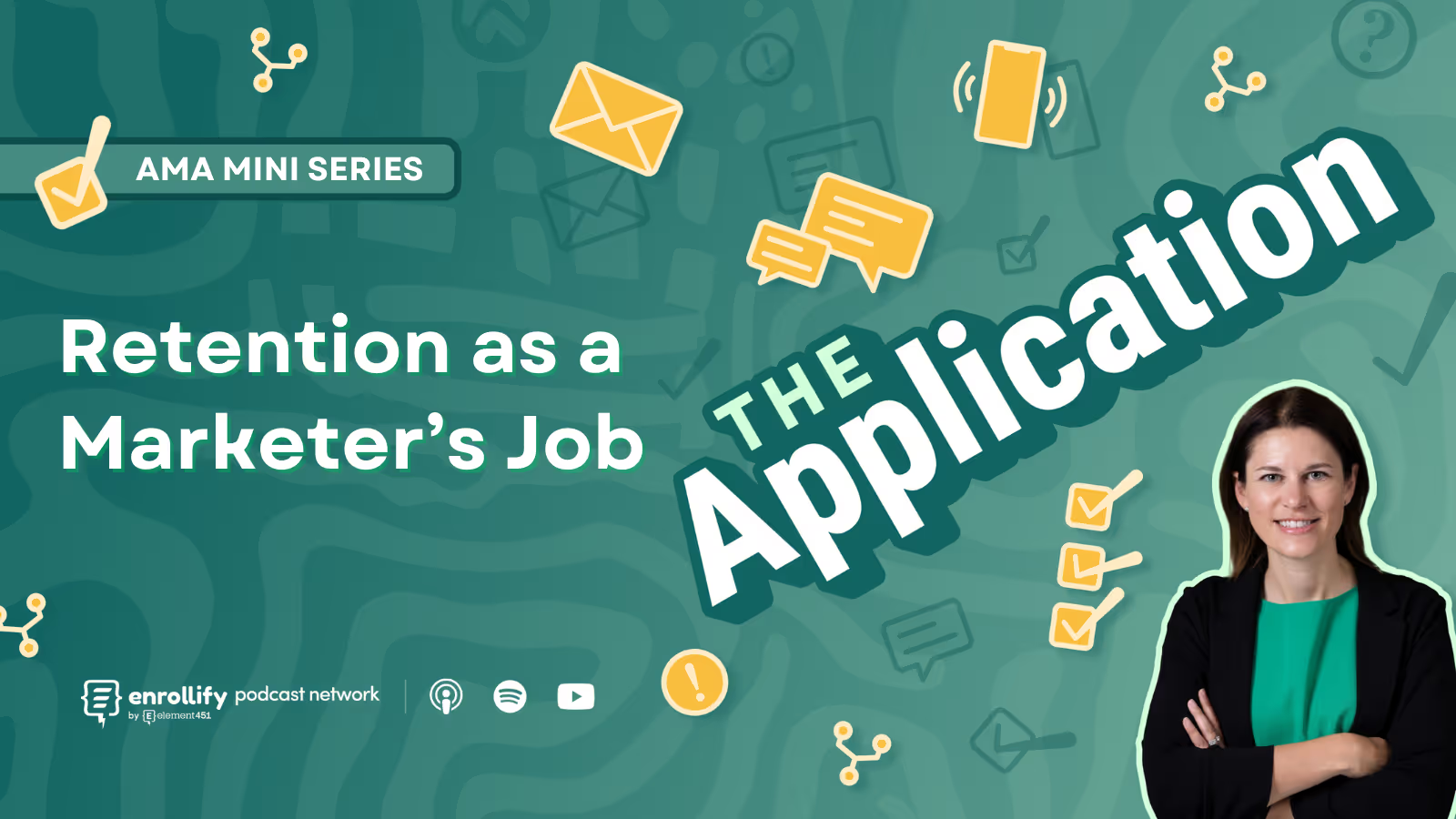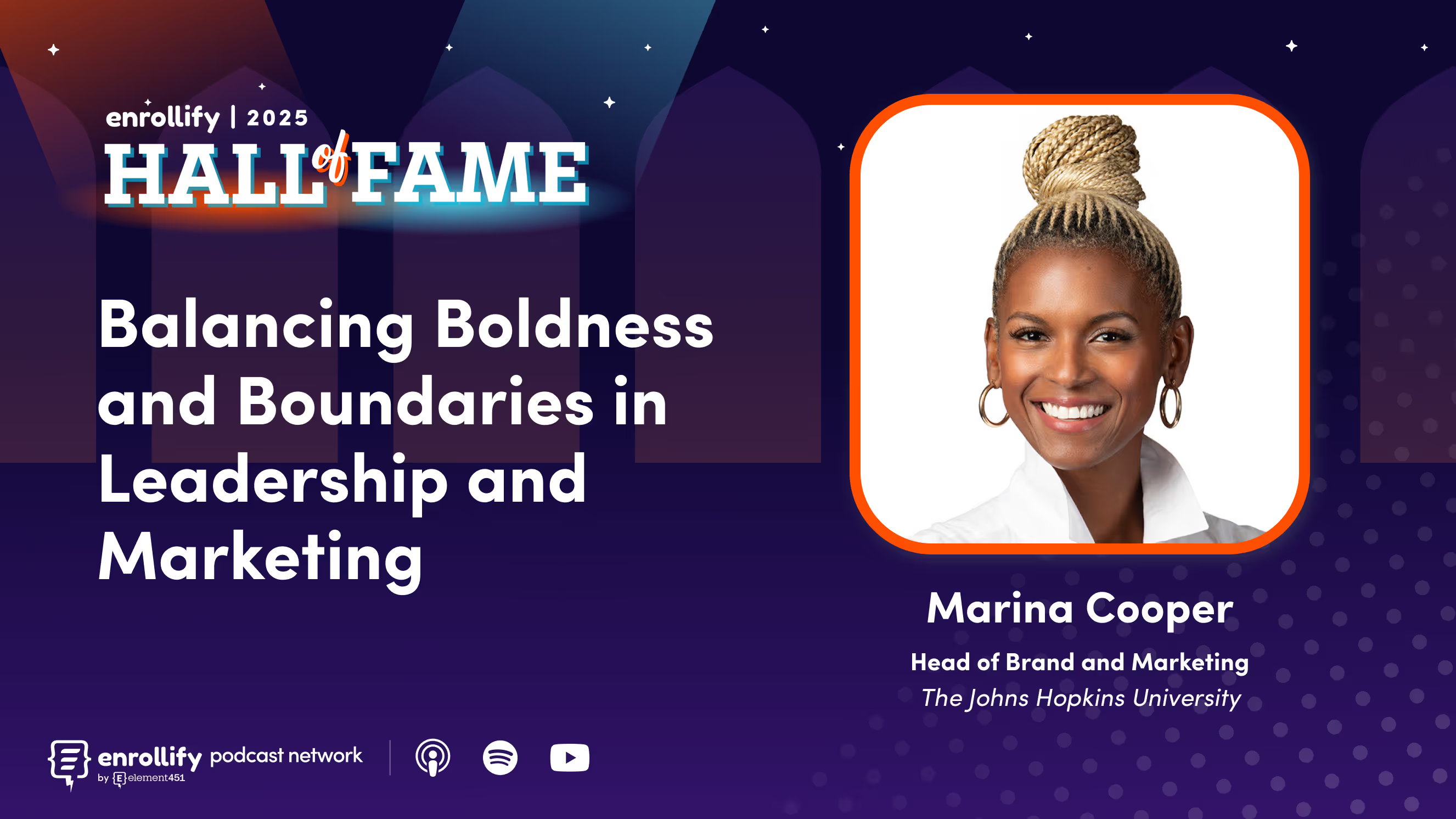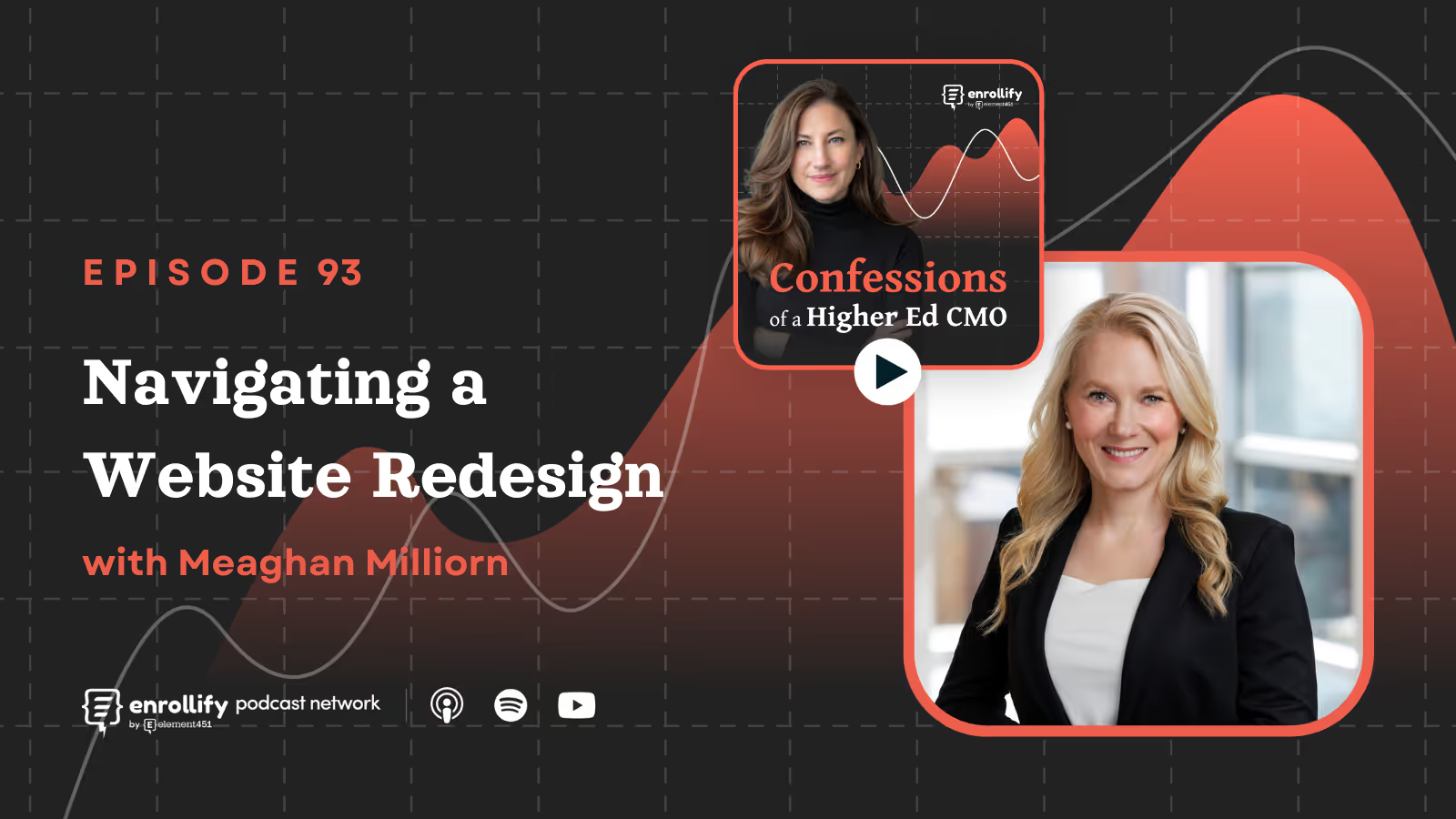About the Episode
About The Episode:
Christian Ponce sits down with Ray Martinez, VP and CEO of Archer Education, to unpack how AI and emerging technologies are disrupting and improving higher education marketing. With over 14 years of experience helping institutions like Tulane University and LSU Online elevate their SEO and content strategies, Ray offers deep insights into the tools, trends, and human-AI collaborations shaping the future of student recruitment. Whether you’re AI-curious or knee-deep in ed tech tools, this episode breaks it down with both technical know-how and cultural nuance.
Key Takeaways
- AI is transforming higher ed marketing strategies by enhancing SEO performance, competitive analysis, and student engagement tactics.
- SEO for higher education is evolving, with new AI-powered search experiences (like Google Gemini and AI Overviews) changing how prospective students discover programs.
- Human-AI collaboration is essential—AI can accelerate content creation and analysis, but human oversight ensures accuracy, cultural sensitivity, and brand authenticity.
- AI bias remains a real challenge, especially in visual representation and multicultural marketing—making DEI-conscious inputs and human editing more crucial than ever.
- Tools like ChatGPT, Claude, and Elephant AI are helping teams save hours on data analysis, content ideation, and market research.
- To stay ahead, marketers need to build AI literacy, adopt a culture of experimentation, and understand how to prompt effectively.
What is the role of AI in higher education marketing?
AI is becoming a fundamental component in higher education marketing strategies, particularly in SEO. As Ray Martinez explains, tools like ChatGPT and Google Gemini are redefining how schools connect with prospective students. SEO used to be about optimizing for traditional search engine results, but now it’s about showing up in AI-powered environments—whether that’s through semantic search, AI summaries, or conversational interfaces. This shift means marketers must rethink how their content is structured and what kinds of information they present on webpages.
Ray also notes that AI allows for broader audience reach and more efficient resource allocation. With the right use of AI, institutions can analyze massive datasets, identify strategic gaps, and optimize campaigns in ways that would have previously required teams of analysts. The bottom line? AI isn't just a trend—it’s a strategic advantage in enrollment marketing.
What AI tools are most effective in higher ed marketing?
Ray and his team at Archer Education have experimented with a wide range of tools. Some standout mentions include ChatGPT and Claude for content and data analysis, Lumen5 for video production, and Elephant AI for KPI tracking. These tools help marketers automate time-consuming tasks like creating dashboards, summarizing documents, or crafting infographics.
Despite the wide selection of tools available, Ray stresses that it's not just about automation—it’s about amplification. AI doesn't replace your strategy; it enhances it. Whether you're running a competitive analysis or crafting a new landing page, the tech can save hours—if used responsibly.
Should marketers be intimidated by AI?
Absolutely not, says Ray. While the capabilities of AI can seem overwhelming, the user experience is becoming more intuitive every day. From typing prompts to uploading images, modern tools are designed for non-technical users. But there’s a caveat: marketers need to understand the limitations of AI and know when to intervene.
Ray gives a humorous but telling example of AI altering his own image—changing the texture of his hair and even aspects of his race—when prompted to generate visuals. It’s a stark reminder that AI bias is real and rooted in underrepresentation in training data. Marketers need to be culturally competent and critical when deploying AI in inclusive marketing campaigns.
How can AI support inclusive and multicultural marketing strategies?
This is where AI needs human oversight more than ever. AI models are only as good as the data they’re trained on—and when that data lacks diversity, the output can reinforce stereotypes or erase cultural identities. Ray shares how AI tools often "whitewash" his Afro-Latino features in image generation unless he carefully codes prompts to control for those attributes.
He urges higher ed marketers to be intentional in their use of AI—especially in inclusive campaigns. The key? Use AI to accelerate execution, but always review output through a DEI lens. Whether it’s selecting imagery, crafting messaging, or segmenting audiences, human nuance can’t be automated.
How is AI impacting market research and student segmentation?
AI tools are significantly reducing the time needed for tasks like competitor analysis, message positioning, and focus group preparation. Ray recounts a recent project where he used AI to identify UVPs and positioning for 12 competitor schools in seconds—a task that would’ve taken weeks just two years ago.
These tools can also reveal insights into link relevancy, audience overlap, and even regional job market trends. For schools focused on increasing enrollment, especially among diverse or international students, these insights are invaluable. AI helps institutions ask smarter questions and make data-backed decisions faster.
How should marketing teams build their AI skillset?
AI is more of a mindset than a hard skill, Ray suggests. It starts with curiosity and the willingness to test tools, explore use cases, and stay informed. He recommends following engineers and thought leaders in the AI space—like Mike King from iPullRank—and staying up to date with industry research.
As for training, Ray believes that no certification can replace hands-on experimentation. He encourages teams to make space for AI exploration in their regular meetings—share use cases, prompt strategies, and wins. Embedding AI into your team culture is what will future-proof your marketing efforts.
Enrollify is produced by Element451 — the next-generation AI student engagement platform helping institutions create meaningful and personalized interactions with students. Learn more at element451.com.







.avif)







